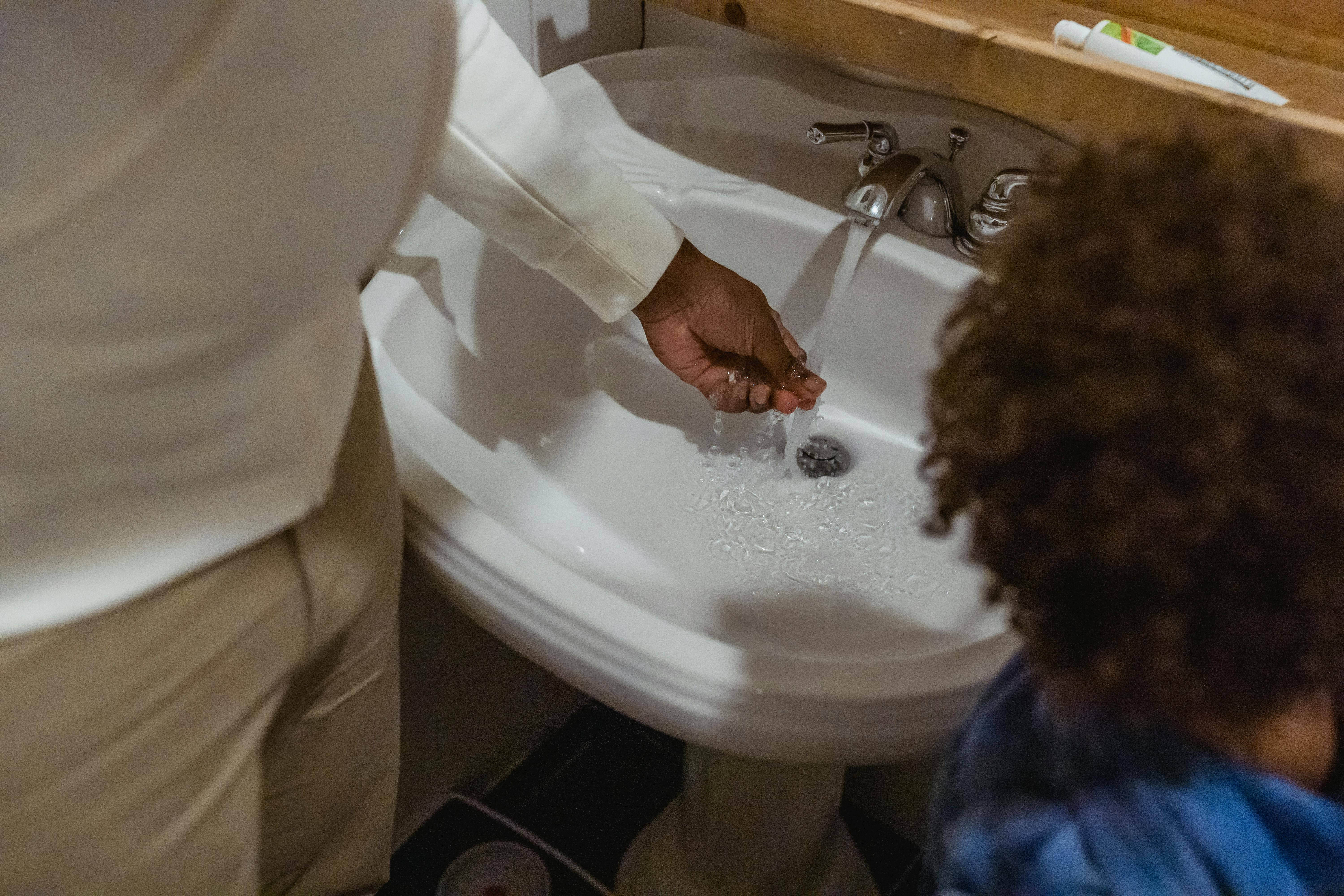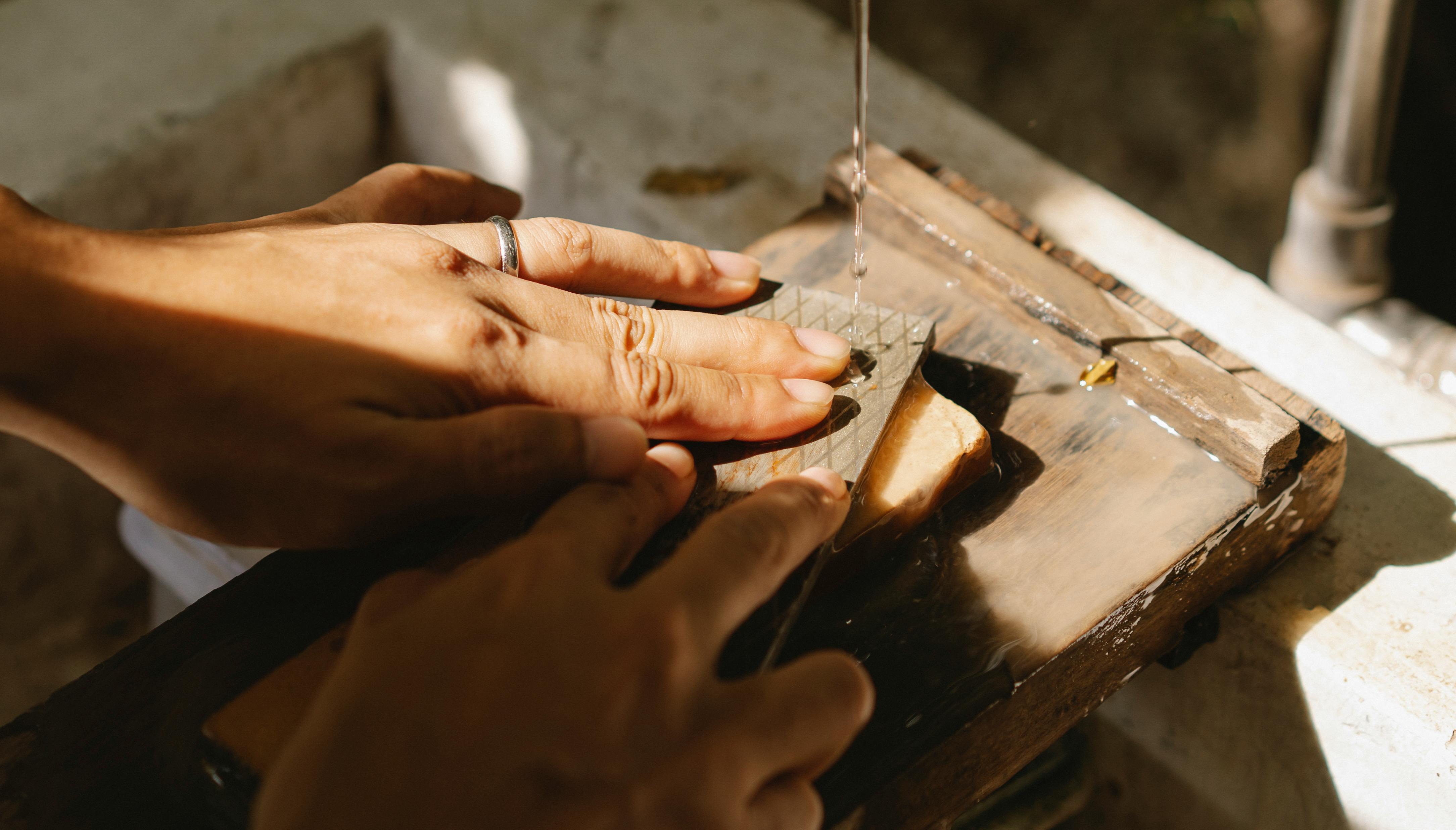Distilled water is water that has been heated to its boiling point and condensed back into a liquid form. Distilled water is free from impurities, minerals, and toxins found in tap water. It can be used for many purposes, such as drinking, medical use, and even as a cleaner for electronic equipment. If you want to make distilled water from your tap water at home, it’s actually quite simple. In this guide, we’ll explain how you can get distilled water from your tap water using just a few supplies and some basic knowledge.Distilling tap water is a simple process that can be done at home with basic equipment. Start by obtaining a distillation apparatus. This can be a pot and lid, or it can be a more elaborate still. Boil enough tap water to fill the pot halfway. Place the lid on the pot and ensure that it fits snugly so that the steam created from boiling the water cannot escape. Attach a tube to the lid and direct its end into another container. As the steam rises, it will condense against the lid and run down into the other container as distilled water. Allow all of the water in the pot to evaporate before stopping boiling, then check to make sure that all of it has been collected in the second container. The result should be pure distilled water free of contaminants and impurities.
What You Need to Distill Tap Water
Distilling tap water is a great way to make sure you are getting clean and safe drinking water. To distill your own tap water, you will need a few basic items. You will need a large pot or kettle with a lid, some type of heat source (a stovetop or hot plate works best), and some kind of condenser. You can find all of these items easily at your local hardware store or online.
Once you have the necessary supplies, it’s time to get started. Start by boiling the water in the pot or kettle. As the water boils, it will evaporate and turn to steam; this steam is then condensed back into liquid form in the condenser. This process removes any solids, bacteria, and other impurities from the water, resulting in pure distilled water that is now safe for drinking.
When collecting the distilled water from the condenser, make sure to pour it into a clean container as soon as possible to avoid contamination from airborne particles or bacteria from outside sources. If you plan on storing your distilled water for long periods of time, be
Safety Precautions When Distilling Tap Water
It is important to take safety precautions when distilling tap water as it is a process of boiling water and then condensing the steam back into liquid. This is done in order to remove impurities from the water such as heavy metals, minerals, parasites, bacteria, and other contaminants. It is a good idea to use a quality distillation system that has been properly installed and tested for safety.
In addition to using a quality distillation system, there are several safety precautions that should be taken when distilling tap water. First, make sure that all components of the distillation system are securely connected and sealed off properly so that no steam or boiling liquid can escape. It is also important to ensure that all parts of the distillation system are working correctly and safely. Additionally, it is important to monitor the temperature of the boiling liquid as it can become very hot during the process and could cause serious burns if it comes into contact with skin.
When setting up the distillation system, it is also important to make sure that there are no flammable materials nearby as they could ignite from the heat generated by the boiling liquid.
Step 1: Gather the Necessary Supplies
The first step in distilling tap water is to gather the necessary supplies. You will need a large pot, an immersion heater, a condenser, and a collection container. You may also want to use a thermometer and a funnel for convenience. Once you have all the supplies ready, you can move on to the next step.
Step 2: Fill the Pot with Water
Fill the pot with tap water and ensure that it is at least two-thirds full. This will give enough space for the steam to be generated and collected without overflowing. Make sure that you don’t fill it too full as this could lead to problems later on.
Step 3: Heat the Water
Once the pot is filled with water, place it on an immersion heater or other heat source. Turn up the heat until it starts to boil, which should take about 10 minutes. Boiling water helps to convert it into steam, which is then collected in the condenser.
<
Benefits of Drinking Distilled Water from Tap Water
Drinking distilled water from tap water is one of the most beneficial ways to stay hydrated and healthy. Distilled water is pure and free from contaminants, minerals, and other impurities found in tap water. It has been shown to be beneficial for people suffering from a wide variety of ailments such as kidney disease, heart disease, diabetes, and digestive disorders. It is also rich in oxygen which helps to improve brain function. Additionally, drinking distilled water can help to reduce the risk of developing certain types of cancer.
In addition to the health benefits, distilled water can also provide an economic advantage. It usually costs less than bottled water or other forms of purified drinking water. Additionally, distilled water can be used for many household purposes such as cleaning and sterilizing surfaces, laundry detergents, window cleaners, and more. This makes it an excellent choice for those looking to save money while still maintaining a clean and healthy home environment.
Finally, distilled water is better for the environment because it does not require packaging or transportation. This means that it does not add any extra waste

Reasons for Distilling Tap Water
Distilling tap water is one of the most popular methods for purifying drinking water. It is an effective way to remove impurities from the water, such as bacteria, viruses, chemicals, and heavy metals. Distillation also removes dissolved solids and minerals that can give tap water an unpleasant taste or odor. Additionally, distilling tap water can reduce the chances of exposure to contaminants that may not be visible to the naked eye.
The process of distilling tap water involves boiling it and capturing the steam vapor before it condenses back into liquid form. This method is highly effective in removing impurities from tap water, including bacteria, viruses, and other chemical contaminants. The process leaves behind only pure steam vapor that can be condensed back into clean drinking water.
Another benefit of distilling tap water is that it can help remove chloramines and chlorine from the drinking supply. These compounds are often used in municipal water supplies as a disinfectant but can cause unpleasant tastes and odors in drinking water. By distilling this type of water, these compounds are removed along with other
Distilling Tap Water
Distilling tap water is a great way to ensure that the water you’re drinking is safe and free from contaminants. There are a few different methods for distilling tap water, each with its own benefits and drawbacks.
The most common method for distilling tap water is boiling. This method involves bringing the water to a rolling boil and collecting the steam in a separate container. The steam will condense into pure, distilled water, which can then be cooled and consumed. Boiling is an effective way to distill water, but it takes a significant amount of time and energy to do so.
Another popular method for distilling tap water is using a home distiller. Home distillers are devices that use electricity to heat the water and evaporate it into steam, which is then condensed into distilled water. Home distillers are relatively easy to use and require no special skills or knowledge. However, they are more expensive than other methods of distillation and require access to electricity.
Finally, there are commercial-grade distillers available for those who
Duration of the Process of Distilling Tap Water
The duration of distilling tap water depends on the type of distillation system used. Generally, the time required for a simple distillation process is about two to three hours. However, if a more complex system is used, such as reverse osmosis, the process can take up to four hours or longer. The time also varies depending on the amount of water that needs to be distilled and the size of the distillation system.
Most types of distillation systems use a heating element to heat up the water which then evaporates and then condenses back into liquid form in a separate container. This process removes any impurities, such as heavy metals and other contaminants from the water. The condensation process also helps to reduce any unwanted odor or taste that might be present in tap water.
For those who are looking to speed up their distillation process, there are several methods available that can help shorten the overall duration. Using larger containers with higher concentrations of heat can help reduce the time needed for evaporation and condensation. Additionally, using multiple stages during evaporation can also help reduce the overall time needed

Conclusion
Distilling tap water can be an easy and economical way to get safe and clean drinking water. Distilling tap water is a simple process that can be done at home using minimum equipment and tools. It is a great way to ensure the safety of the water you drink while saving money. Water distillation eliminates any contaminants from the tap water, ensuring it is safe and free of bacteria, viruses, and other contaminants.
Distilled water has its uses in many different applications, including for drinking, cleaning surfaces, washing clothes, cooking, and more. Distilling tap water is not only a great way to make sure your drinking water is safe but can also save you money in the long run.
Overall, distilling tap water is a simple process that ensures the safety of your drinking water while saving you money in the long run. Distilled water has many uses around the home and can be used for various applications such as cleaning surfaces, washing clothes, cooking, and more. With distilled tap water being readily available with minimal equipment or tools needed to make it safely at home – it’s no wonder why so many people are opting for this method over store-

